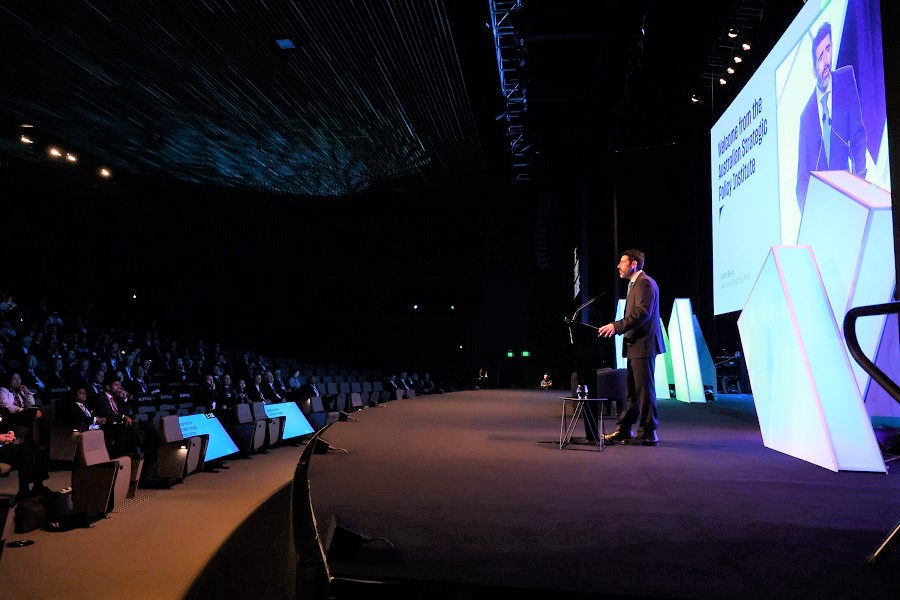
ASPI’s Sydney Dialogue is already on its way to becoming the world’s premier policy summit on critical, emerging, cyber and space technologies. When we wanted to build this dialogue four years ago, not all stakeholders saw the global gap we were trying to fill, and it almost felt a bit before its time.
Today, that gap is glaringly obvious and revealed daily in the news as we watch technology race ahead. Few today would argue against its value for Australia, the Indo-Pacific region and, in light of Russia’s war on Ukraine, globally.
Critical technologies are, of course, at the centre of strategic competition between states. Should society care? Absolutely, because those very technologies are already changing our daily lives. Knowing who is building and controlling the technologies we are using every day is vital. The security, prosperity, political stability and social harmony of nations—and coalitions of nations—will all depend on their ability to harness the promise and create clear parameters to guide the safe and responsible use of critical technologies.
Quantum computing, for example, offers the potential to solve in seconds complex problems that would take the fastest supercomputer thousands of years. Such a breakthrough could render existing security measures obsolete and shift social and geopolitical relations overnight. Artificial intelligence, meanwhile, has the promise of freeing us from both routine and complicated tasks, allowing individuals and organisations to focus on higher-level strategic and creative endeavours. But it also involves the risk of the AI not understanding important nuances in global geopolitics and human rights, for example, which can lead to mis- and disinformation. We are already seeing how AI can be weaponised to pollute our information environment with dangerous propaganda and deepfakes.
Beyond the technologies themselves, there are transformational shifts in how innovation is taking place and who is doing the innovating. During the Cold War, the research and development of critical technologies—particularly those relevant to security—were driven largely by huge government-funded programs in government-controlled facilities. Of course, only a small number of governments had the resources to generate cutting-edge technologies. Today, leading- and bleeding-edge technologies are emerging out of commercial R&D programs, which means they are available to a wider range of strategic players, large and small. This complicates national efforts; technology companies based in one country can, and in many cases do, work for the governments of other countries, even when the strategic goals of the two countries are misaligned.
Innovation is also increasingly achieving a bootstrapping effect. As former Google CEO Eric Schmidt has written of artificial intelligence: ‘Faster airplanes did not help build faster airplanes, but faster computers will help build faster computers.’
Regulatory and policy responses are struggling to keep up. No single sector, be it government, the tech industry or civil society, has all the answers. But democracies risk falling further behind as authoritarian regimes, without the same governance principles or accountability and transparency mechanisms, and with military–civil fusion, have surged ahead to the detriment of democratic ideals, social harmony and international standards. While we thought the internet and social media were uncontrollable, they harnessed new capability to wield greater power. With yet another tech revolution imminent, we cannot afford to be slow and passive again. We have to learn from the past or it will be a case of third strike.
That’s why the Sydney Dialogue was established in 2021. We need forums where the world’s leading thinkers and decision-makers—from government, industry, academia and civil society—can meet and exchange ideas and strategies, deepen cooperation and form new partnerships. While we’re attuned to the threats and challenges, we’ve very deliberately sought contributions from actors who have a positive and proactive vision for technology that upholds fundamental values such as human rights, openness and sovereignty.
Those players who share this vision must be the ones who shape the rules of the road. We don’t want to see a lawless space, and we certainly don’t want to see a technology ecosystem shaped by actors who are happy to use technology to spread disinformation, enable coercion or trample fundamental individual rights.
At the heart of the Sydney Dialogue is a discussion about how to harness the opportunities and mitigate the risks of technology, which will include the benefits of international collaboration, ways to protect sovereignty and build resilience, policies to foster investment and innovation, the next game-changers in technology, geopolitics and why technology lies at the heart of competition, and how we work together on governance and public policy.
Key technologies include AI, 5G/6G, robotics, biotech, nanotech, quantum, space, our information environment and of course cyber. The conversation brings in economies, climate change and energy, our societies, foreign policy, national security, defence capability, intelligence and ethics, and many other topics.
The goal of the Sydney Dialogue is to make a lasting contribution to ensuring these technologies grow in the right way—making us more prosperous, more equal, wiser, freer, safer and more secure. We aim to give the Indo-Pacific a new platform and a greater voice in global debates, while helping to build cooperation and global partnerships between government, industry and civil society, and between partners and allies.

